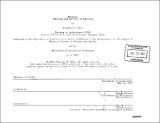| dc.contributor.advisor | Julian Beinart. | en_US |
| dc.contributor.author | Sahni, Pitamber P. (Pitamber Prakash), 1976- | en_US |
| dc.contributor.other | Massachusetts Institute of Technology. Dept. of Architecture. | en_US |
| dc.coverage.spatial | a-ii--- a-pk--- | en_US |
| dc.date.accessioned | 2012-04-26T18:47:22Z | |
| dc.date.available | 2012-04-26T18:47:22Z | |
| dc.date.copyright | 2003 | en_US |
| dc.date.issued | 2003 | en_US |
| dc.identifier.uri | http://hdl.handle.net/1721.1/70371 | |
| dc.description | Thesis (S.M.)--Massachusetts Institute of Technology, Dept. of Architecture, 2003. | en_US |
| dc.description | Includes bibliographical references (p. 141-145). | en_US |
| dc.description.abstract | The Partition of British India into the two dominions of India and Pakistan on August 15th 1947 left In its wake the largest human migration of the twentieth century with the transfer of twelve million people across two newly formed borders. The boundary line, demarcating Indian and Pakistani territory, was created 17 miles to the west of Amritsar awarding the city to India. Amritsar, a flourishing commercial and cultural center, thus, became a border city overnight on the Indian side. Mass religious emigration ensued clearing the city 's Muslim population of over 184,000 people coupled with the immigration of a huge Hindu -Sikh population from Pakistan over a period of a few months. This thesis explores how Partition affected the city of Amritsar. Its metamorphosis from a viable commercial and cultural center to a city that shows a decline in population post-partition for the first time since its inception is partially explained by its proximity to the International Border, its vocational and demographic shifts and its official label as a transit city . The thesis documents communal migration, both inter- and intra-city, from March 1947 to the mid 1950s with the arrival of Hindu and Sikh refugees from West Punjab. This thesis then cross-references Amritsar with Lahore, a border city in Pakistan to explore how and why Partition affected that city differently. Amritsar is finally then seen through the lens of rising Sikh nationalism in the 1980s and its effect on the urban fabric. This thesis concludes with general inferences that can be drawn from th e experiences in Amritsar as a case study of a city transformed by an unplanned and immediate forced resettlement. | en_US |
| dc.description.statementofresponsibility | by Pitamber P. Sahni. | en_US |
| dc.format.extent | 145 p. | en_US |
| dc.language.iso | eng | en_US |
| dc.publisher | Massachusetts Institute of Technology | en_US |
| dc.rights | M.I.T. theses are protected by
copyright. They may be viewed from this source for any purpose, but
reproduction or distribution in any format is prohibited without written
permission. See provided URL for inquiries about permission. | en_US |
| dc.rights.uri | http://dspace.mit.edu/handle/1721.1/7582 | en_US |
| dc.subject | Architecture. | en_US |
| dc.title | Batwara : partition and the city of Amritsar | en_US |
| dc.type | Thesis | en_US |
| dc.description.degree | S.M. | en_US |
| dc.contributor.department | Massachusetts Institute of Technology. Department of Architecture | |
| dc.identifier.oclc | 53129455 | en_US |
